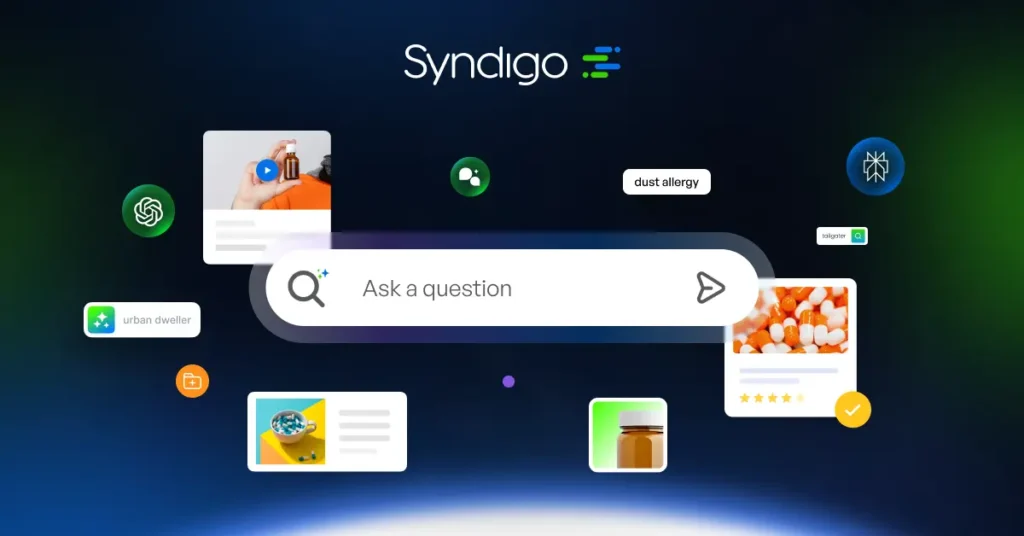As AI-driven search continues to evolve, it is important for brands to also build on their strategies to stay visible and competitive. In a recent Syndigo webinar, industry experts explored the rise of Generative Engine Optimization (GEO) and how it’s transforming the way brands approach content creation, discoverability, and digital shelf performance.
What Is GEO… and What You Should Know about It
GEO represents the evolution of traditional Search Engine Optimization (SEO), incorporating AI models and generative engines like ChatGPT, Perplexity, and Rufus. Unlike SEO, which focuses on variables such as keyword density and metadata, GEO emphasizes the importance of context. Brands must now consider not just what their products are, but also who uses them–when, where, and why.
For example, a product like a barbecue grill may perform well in search due to having technical specifications like stainless steel burners or temperature precision. However, without also having contextual cues, such as being ideal for campers, tailgaters, or apartment dwellers, the product may be overlooked by generative engines that prioritize relevance and user intent.
The Challenge of Personalization in Search
One of the continued challenges relating to search is the impact of personalized and location-specific search results. As search engines increasingly tailor results based on user history, geographic location, and even inventory availability, a product might rank highly for one user but be nearly invisible to another.
This personalization can distort a brand’s perception of its market position. Internal teams may see their products ranking well due to past purchases or browsing behavior, while new customers experience entirely different results. To overcome this challenge, brands should ensure they are using clean browser environments and digital shelf analytics tools to gain a more accurate view of their true visibility.
Why Content Must Evolve with Consumer Behavior
Another significant takeaway was the importance of regularly reviewing and refreshing product content to reflect market changes, or seasonal and behavioral shifts in consumer search patterns. Search terms for products as varied as allergy medication or toilet paper can vary significantly throughout the year. For instance, spring searches may focus on pollen and grass allergies, while winter queries may center on dust and pet allergens.
Even ‘evergreen‘ products need regular review and updating, because keyword trends evolve. As categories shift, subcategories are created, or new industry terms spring up, brands that don’t refresh their content risk missing out on new search traffic. Syndigo recommends a quarterly update cadence to ensure content remains aligned with current consumer behavior and search engine expectations.
Actionable Insights for Brands
Here are several practical recommendations shared in Syndigo’s webinar, for brands looking to optimize for GEO:
- Balance content and context: Combine keyword-rich descriptions with real-world use cases to improve relevance in generative search.
- Update content regularly: Refresh product listings at least quarterly to stay aligned with seasonal trends and shifting consumer language.
- Structure content logically: Follow best practices for creating structured data, including who, what, where, when, and why a product is used.
- Monitor with the right tools: Using reporting applications like Syndigo’s Is it Live and Compare with Live can help brands ensure content is published correctly and remains consistent across channels.
Final Thoughts
As generative engines become more influential in shaping shoppers’ product discovery, brands also must adapt their strategies to remain competitive. GEO isn’t just a trend, but rather the next phase in the way that search works. By considering context, personalization awareness, and regular content optimization, brands can maintain a positive product experience online and position themselves for long-term success in the evolving digital shelf landscape.
Watch our webinar on GEO here.










